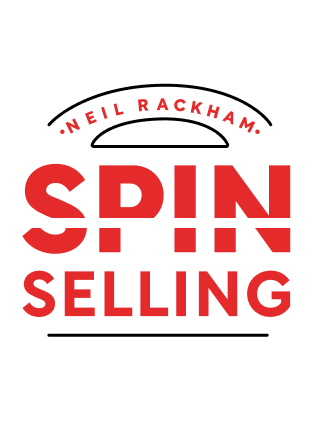

This article is an excerpt from the Shortform summary of "Spin Selling" by Neil Rackham. Shortform has the world's best summaries of books you should be reading.
Like this article? Sign up for a free trial here .
What is features and benefits selling? Does it work? And what does it have to do with SPIN selling?
Feature and benefits selling is a sales strategy that’s meant to show the value in your product. Features and benefits selling is a strategy long employed by salespeople. Now, you can add the SPIN selling strategy to features and benefits selling.
Features and Benefits Selling
After the investigating stage of a sale where you ask SPIN questions, the next stage is demonstrating value. This stage, also referred to as demonstrating capability, is where you present your solution. In a major sale, some ways are more effective than others. Features and Benefits selling is one of these effective ways.
For the last 60 years, sales training has advocated using features and benefits selling to demonstrate value, or describe your products and services. The conventional wisdom has been that features are facts or characteristics about a product; they aren’t persuasive. Benefits are the ways features help the customer, and they’re a compelling way to present your solution’s value.
But research indicates that:
- The way reps are trained to use benefits is ineffective in larger sales.
- The traditional approach is likely to get a negative response.
- Defining a benefit is more complicated than it seems.
Features
Conventional wisdom has held that facts/features are neutral, neither helping nor hurting sales success. Examples are: “The cost is $20,000,” “We have two models, basic and enhanced,” or “This computer has X amount of memory.” Facts play out a bit differently in small and large sales—research has shown facts may help slightly in small sales, but their impact is neutral in larger sales. This plays out in features benefits selling. Specifically:
- Reps in unsuccessful calls spend somewhat more time discussing facts/features, but basically, features don’t have an impact on sales.
- In successful small sales, describing features contributes slightly to success. This isn’t the case for larger sales.
- In larger sales, describing features is detrimental early in the call and neutral later.
- Users are more interested in features than decision-makers are.
- Occasionally, in the middle of a complex sale of a technical product, the customer may start asking for feature details. At this point, people with technical expertise in the product can boost the sale.
Overall though, the longstanding belief that features generally don’t help a sale much, if at all, is correct.
Benefits
While the definition of features is straightforward, there are numerous definitions of benefits you need to know for features benefits selling. For example, a benefit:
- Describes how a feature helps the customer.
- Saves the customer money
- Is a unique aspect of your solution that no one else offers
- Creates a motive to buy
Researchers tested the effectiveness of various benefit assertions in sales calls, and narrowed them to two main types:
- A type-A benefit, which shows how a product/service can help generally (this is the most commonly taught benefit definition).
- A type-B benefit, which demonstrates how a product/service meets an explicit need of the customer.
Researchers found that when it came to features benefits selling:
- In smaller sales, using the type-A benefit contributed strongly to success; in large sales, it contributed only a little to success.
- Using the type B-benefit—focusing on how the solution addresses explicit needs— contributed strongly to success in both small and large sales.
The book hereafter refers to type-A benefits (how it can help) as “advantages,” and type-B benefits (how it addresses explicit needs) simply as “benefits.”
There are three ways a seller can demonstrate value: by describing features, advantages, or benefits. Here’s how they compare:
| Seller demonstrates value by focusing on: | Seller’s statement: | Effect on small / large sales |
| 1) Features | Describes facts | Somewhat positive/neutral or slightly negative |
| 2) Advantages | Shows how features can help the customer | Positive/somewhat positive |
| 3) Benefits | Shows how the solution meets the customer’s explicit needs | Very positive on both |
Advantages show, in general, how a solution functions or can help the customer. Examples are: “This feature means our machine costs less to operate,” or “It saves time.” Research indicates that advantages:
- Contribute positively to small sales
- Contribute somewhat positively to large sales
Benefits show how a solution meets an explicit need of the customer. Examples are: “We have this in stock, so we can meet your need for immediate delivery,” “This machine will give you the greater speed you’re looking for,” “This feature saves energy, which gives you the cost savings you need.”
Research indicates that benefits:
- Contribute strongly to success in both large and small sales
- Have the greatest effect of any value statements in large sales
Effects of Advantages and Benefits
Advantages have a greater positive impact on small sales than large ones because they address implied needs rather than explicit needs, which you have to develop in a large sale to justify the high price. Offering solutions to implied needs isn’t enough in larger sales. This is part of how features and benefits selling works.
In contrast, benefits are much more powerful in large sales because they address explicit needs (but you have to do the work of developing these needs first in the investigating stage, to the point where customers say they want something).
A Motorola Canada productivity study showed that salespeople who used benefits rather than advantages increased their sales success (revenue) by 27 percent
A study of 5,000 technology companies in Europe and North America found that:
- Calls leading to orders and advances featured significantly more benefit statements.
- There wasn’t any significant difference between successful and unsuccessful calls where reps focused on advantages.
Features and benefits selling can help you close a sale. But features and benefits selling can also lead to common sales objections, so it’s important to incorporate the SPIN method to make it happen.

———End of Preview———
Like what you just read? Read the rest of the world's best summary of Neil Rackham's "Spin Selling" at Shortform .
Here's what you'll find in our full Spin Selling summary :
- What the SPIN in SPIN Selling stands for
- How to demonstrate real value to the person you're selling to
- How to get commitment from your customer to close the sale fast






